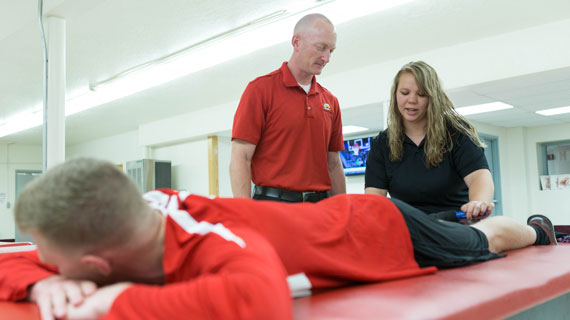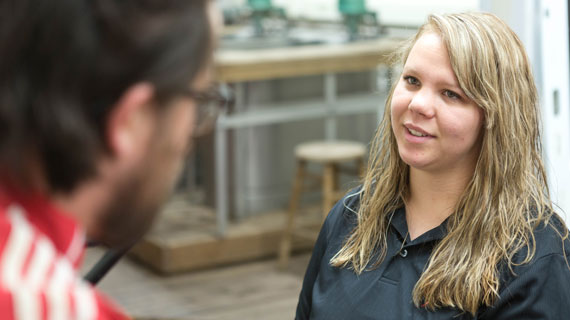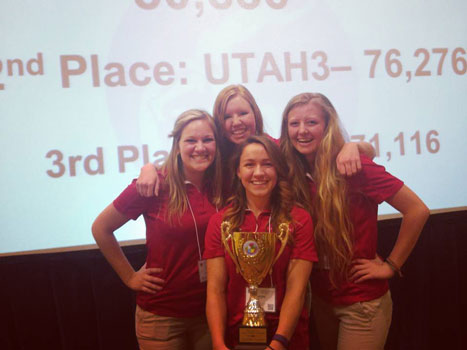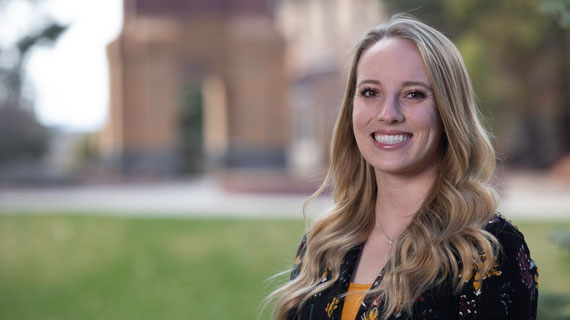The Beginner’s Guide to the Athletic Training Major
Posted: July 17, 2018 | Author: Abigail Wyatt | Read Time: 2 minutes
 Now more than ever, health and fitness are at the forefront of our minds. But, when our level of activity increases, the risk for injury rises as well. That’s where a certified athletic trainer comes in. Southern Utah University's athletic training program is accredited by the Commission on Accreditation of Athletic Training Education (CAATE) and designed to prepare students for a successful career in athletic training. Athletic trainers are experts in evaluating, recognizing, managing and rehabilitating injuries resulting from physical activity.
Now more than ever, health and fitness are at the forefront of our minds. But, when our level of activity increases, the risk for injury rises as well. That’s where a certified athletic trainer comes in. Southern Utah University's athletic training program is accredited by the Commission on Accreditation of Athletic Training Education (CAATE) and designed to prepare students for a successful career in athletic training. Athletic trainers are experts in evaluating, recognizing, managing and rehabilitating injuries resulting from physical activity.
SUU's undergraduate program is unique because it gives students the opportunity to work closely with NCAA Division I college athletes, local high school sports teams, chiropractors and physicians from throughout the southern Utah region. This provides a wide range of hands-on experience unmatched by other undergraduate programs across the state in a five semester program.
Courtney Bradley, an athletic training major from Carson, Washington, shared her basic guide to completing the athletic training program at SUU.
“If you love sports, health, or fitness,” said Bradley, “this is the major for you.”
Take prerequisites. To apply for the program you need to have taken the following four classes: human anatomy, human physiology, CPR Certification, and athletic training/sports medicine lab.
Clinical rotations. You’ll have about 16 hours of clinical rotations per week, which will give you plenty of experience to take to your career. You’ll also have the opportunity to work with athletic teams at SUU, local high schools, and local health offices.
Plan out the semester. Make sure you meet with an advisor to help map out your semesters and to get information about when and how to apply.
Work. Take advantage of your clinical rotations to form connections and look for part-time jobs. Local health offices and high schools are occasionally looking for volunteers or part-time workers. This will give you even more in-field practice, will build your resume, and help you pay your way through college. Future career possibilities include working at a high school, college, university, professional level sports, in PT clinics, industrial work areas, dance companies, extreme sports, and the Olympics.
The demand for athletic trainers continues to grow as people become more aware of sports-related injuries. The need for athletic trainers is expected to grow 19 percent through 2020, according to the U.S. Bureau of Labor Statistics. That means if you graduate with an athletic trainer degree you have a high chance of being hired and retaining a career.
If you think this might be the right path for you, start by talking to an adviser or meet with one of the Department of Physical Education and Human Performance faculty members. They can offer you advice and help get you on the path to success.
This article was published more than 3 years ago and might contain outdated information or broken links. As a result, its accuracy cannot be guaranteed.
Tags: Student Blog College of Education and Human Development



